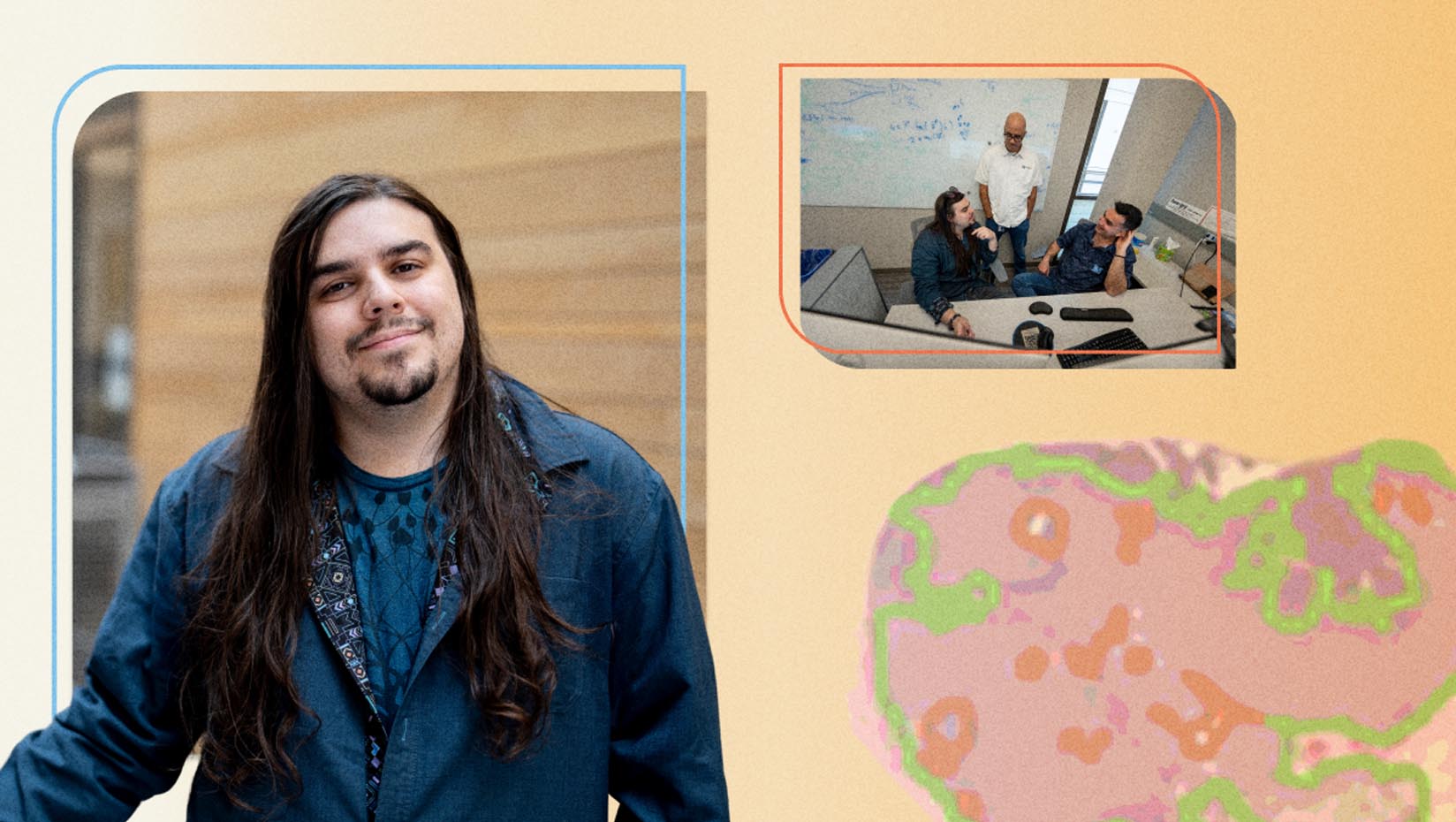
Josh Hamilton: Driven by loss, exploring new ways to treat and prevent cancer
Near the end of high school, Josh Hamilton of Alton, Maine lost a close friend to bone cancer, and early in his undergraduate years, he lost his stepfather to pancreatic cancer. Driven to help mitigate future cancer deaths, he is researching ways to improve early detection, prevention and treatment.
A University of Maine Ph.D. candidate in biomedical engineering, Hamilton’s work focuses on breast and pancreatic cancer by developing novel image analysis techniques to quantify the tissue structure that surrounds tumors, a project he began during his master’s program at UMaine and has continued into his doctoral research.
Through his research, Hamilton works to better understand how the tissue around tumors affects cancer growth. He uses computer programming, image analysis and machine learning to study medical images, borrowing ideas from physics to look at patterns on different scales.
His passion for cancer research first took shape while studying bioengineering, though the decision to tackle cancer stemmed from his personal experience.
“I found bioengineering first, and then realized, due to trauma, I wanted to make sure people didn’t have to feel that way because of something that they can’t control,” Hamilton said.
Working with his doctoral advisor, Andre Khalil, on analysis and physics, and with his former master’s degree advisor, Karissa Tilbury, on biology and imaging, Hamilton studies slides of tissue and breast scans to find ways to detect and potentially treat cancers earlier. His early work on examining collagen in pancreatic tumors, inspired by personal loss, set the stage for his future research on early cancer detection.
Hamilton has also participated in developing tools to make breast cancer detection more efficient. Alongside fellow Ph.D. student Jeremy Juybari and others, Hamilton played a role in the development of the Context Guided Segmentation Network (CGS-Net), an AI system that mimics how pathologists study tissue slides to improve the speed and accuracy of breast cancer diagnoses. He describes his research approach as big-picture, complementing the detail-oriented style of Juybari, with whom he has formed a long-standing friendship.
“I think one reason Jeremy and I work so well together is that we approach problems differently,” Hamilton said. “He’s extremely detail-oriented, while I’m more of a big-picture person. He thinks bottom-up, I think top-down, and that balance has made our research and friendship really strong. He’s the last person still here from when I joined the lab, and I’m probably closer to him outside of work than I am at work.”
A senior member of the CompuMAINE lab, Hamilton also mentors undergraduate, master’s and fellow Ph.D. students while collaborating closely with Khalil and Tilbury. Outside the lab, Hamilton is deeply involved in teaching and mentoring. He recently took on full lecturer responsibilities for courses in medical image analysis.
“I’m teaching Dr. Khalil’s medical image analysis courses while he’s on sabbatical, so it’s just me now,” Hamilton said. “I’m not the teacher’s assistant or the tutor; I’m the teacher. That was a big milestone for me, and I’ve really enjoyed it. I think you need empathy to be a good teacher, and I love seeing that light bulb moment when someone finally gets a concept.”
Hamilton first came to UMaine as an undergraduate in 2017 because of scholarships, such as the Visual and Performing Arts (VAPA) Scholarship, and programs that allowed him to combine his interests in music and bioengineering. He has stayed for his master’s and Ph.D., drawn to the opportunities of conducting cutting-edge research in a smaller, rural university environment.
Outside of research and teaching, Hamilton maintains an active extracurricular life. A percussionist, he was formerly part of UMaine’s pep band. He is also a competitive “Super Smash Bros. Melee” player, organizing tournaments and managing the state community.
It’s Pancreatic Cancer Awareness Month, and as Hamilton works to develop tools to detect this disease faster, anyone interested in learning more about it and contributing to the fight against it can visit the Pancreatic Cancer Action Network website.
Story by William Bickford, graduate student writer.
Contact: Marcus Wolf, 207.581.3721; marcus.wolf@maine.edu
